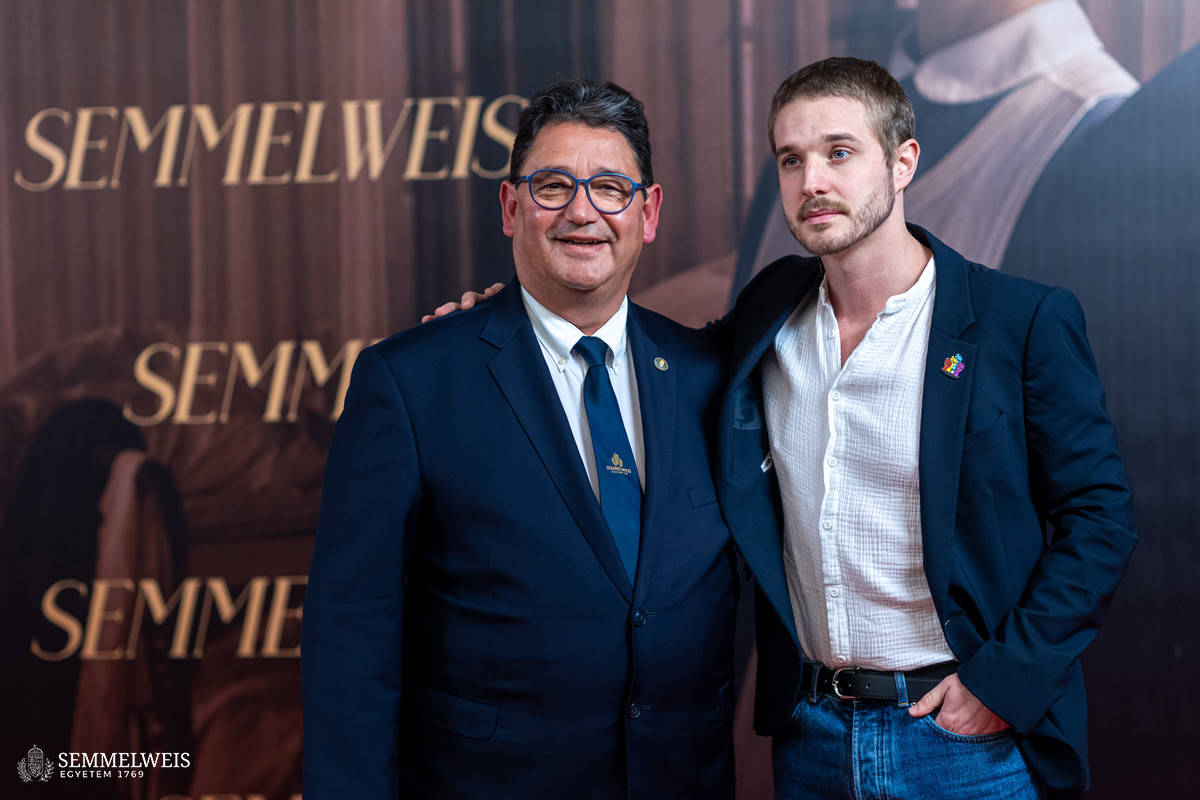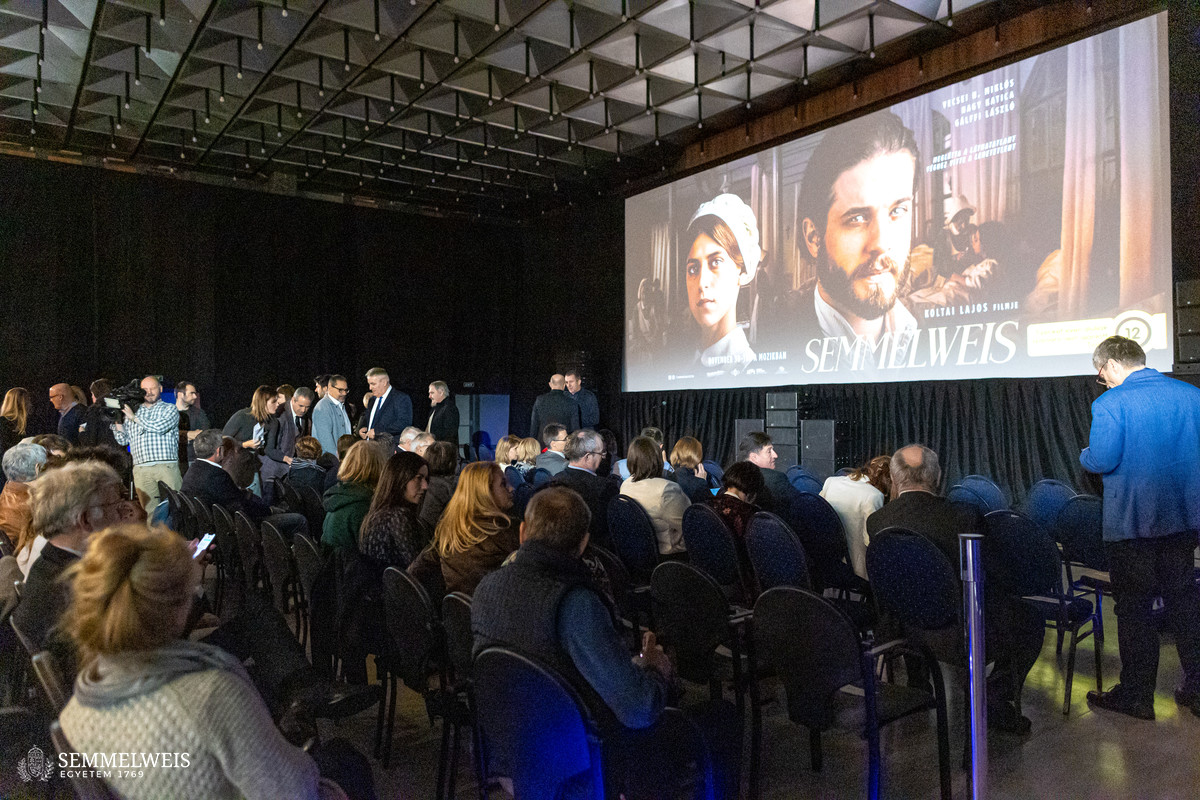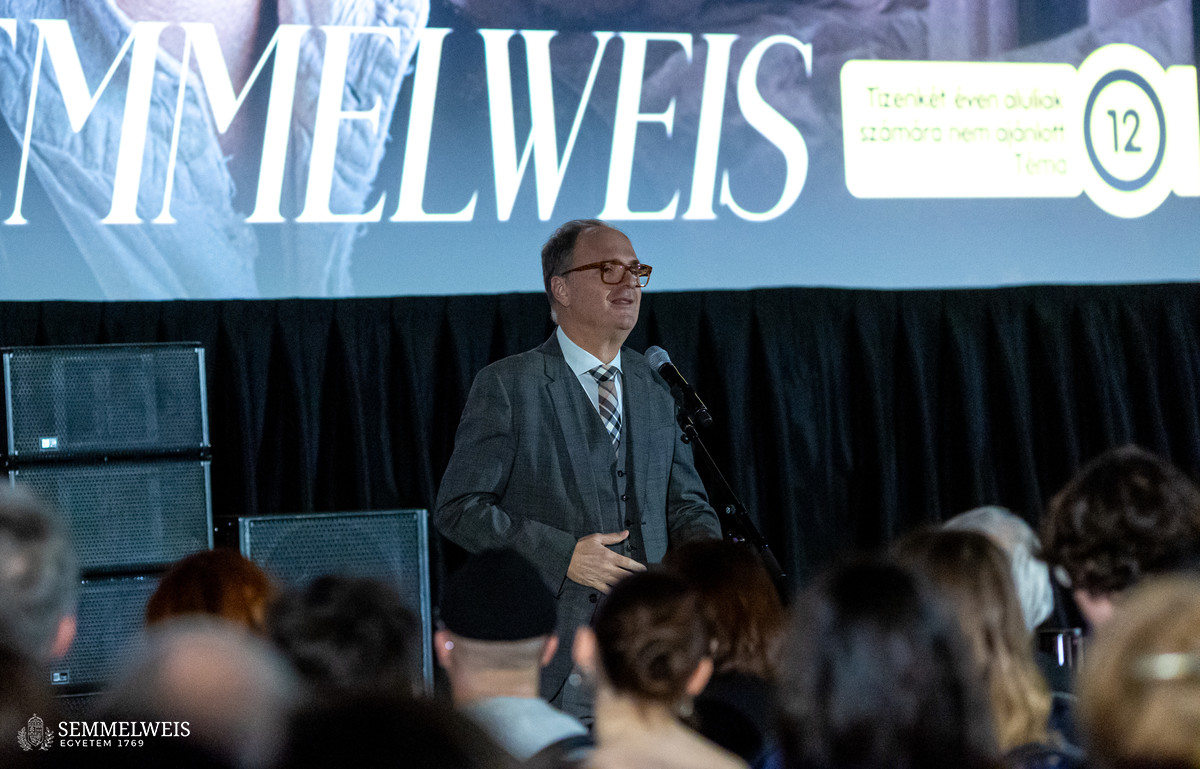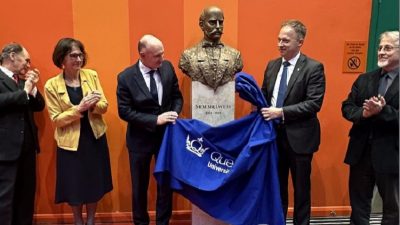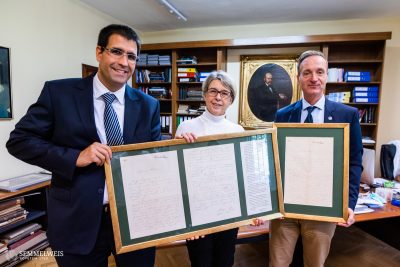 Dr. Béla Merkely, Rector of Semmelweis University, thanked the film’s director Lajos Koltai and producer Tamás Lajos for the movie before the afternoon screening for university citizens, adding that it was an honour to be the first in the country to share the film within the walls of the university.
Dr. Béla Merkely, Rector of Semmelweis University, thanked the film’s director Lajos Koltai and producer Tamás Lajos for the movie before the afternoon screening for university citizens, adding that it was an honour to be the first in the country to share the film within the walls of the university.
“Ignác Semmelweis is a real inspiration. It is no coincidence that on our 200th birthday, in 1969 the university took his name. He is a role model for us, to be followed by all doctors and professionals, all those who work in the health sector. Quoting Ignác Semmelweis, he stressed that “however painful and overwhelming a realization may be, there is no antidote in denial.” As he put it, the film aptly depicts the eternal lesson of the true story of Ignác Semmelweis, according to which doctors must constantly learn, seek new ways in addition to carrying out their daily routine, and always keep in mind not to avoid the problems that arise, but rather strive to solve them.
The 500-seat auditorium of the Theoretical Block in Nagyvárad Square was packed to capacity for the afternoon premiere screening. There was a massive interest from students and staff, with registration filling up in around three hours. The film was screened in Hungarian with English subtitles, as many foreign students had also registered.
The movie’s gala premiere was held at the same venue in the evening, attended by the film’s creators, director Lajos Koltai, screenwriter Balázs Maruszki, Miklós H. Vecsei, the main character, Katica Nagy, the female lead and Csaba Káel, the Government Commissioner for Film. Former President of the Republic János Áder and his wife Anita Hercegh also attended the screening. The event was attended by several university leaders, Rector Dr. Béla Merkely, vice-rectors, clinic directors and other executives.
 At the ceremonial debut, Dr. Béla Merkely said that Ignác Semmelweis is one of the most famous doctors around the globe, there is no school in the world that does not teach handwash with chlorine water, and there is no surgery today that does not begin with washing hands according to the Semmelweis method. In his welcome speech, Csaba Káel, Government Commissioner for Film, referred to the two Hungarian researchers recently recognized with the Nobel Prize, Katalin Karikó and Ferenc Krausz. He compared their work to that of Ignác Semmelweis, emphasizing that in terms of the importance of Semmelweis’s discovery, he fits into the ranks of recent Nobel laureates. As he put it, Ignác Semmelweis is a real superhero, whose life and deeds should be known to the whole world.
At the ceremonial debut, Dr. Béla Merkely said that Ignác Semmelweis is one of the most famous doctors around the globe, there is no school in the world that does not teach handwash with chlorine water, and there is no surgery today that does not begin with washing hands according to the Semmelweis method. In his welcome speech, Csaba Káel, Government Commissioner for Film, referred to the two Hungarian researchers recently recognized with the Nobel Prize, Katalin Karikó and Ferenc Krausz. He compared their work to that of Ignác Semmelweis, emphasizing that in terms of the importance of Semmelweis’s discovery, he fits into the ranks of recent Nobel laureates. As he put it, Ignác Semmelweis is a real superhero, whose life and deeds should be known to the whole world.
The two-hour biographical drama, which is screened in cinemas from 30 November, was the first to be seen in Hungary by the citizens of Semmelweis University. The film was previously shown in New York and was voted Best Film at the Los Angeles Hungarian Film Festival, with Miklós H. Vecsei, playing the title role, winning Best Actor and Katica Nagy, the female lead, winning Best Actress.
Lajos Koltai’s work focuses on the years of Ignác Semmelweis in Vienna, when the “saviour of mothers” first notices and later proves why so many newborns and mothers die of a disease called puerperal fever. Semmelweis discovers that the cause is in fact a medical error, and slowly realizes that many have died at his hands – the drama of this realization is at the heart of the film.
Ignác Semmelweis recommended hand washing with chlorine solution as an antiseptic to his colleagues, but his provisions for hand disinfection were unpopular, and his statistical evidence was considered irrelevant. His doctrines were rejected by the medical community despite the fact that he had demonstrated their effectiveness in practice in his department. Not only did he recognize the importance of hand disinfection and was a pioneer in the establishment of experimental pathology, but he is also credited with the first ovarian surgery performed in Hungary and the second caesarean section. He published regularly and was also committed to the teaching of obstetrics. Despite this, he did not receive the recognition he deserved in his lifetime, but posterity gradually acknowledged him: the first statue of Semmelweis was unveiled in Budapest in 1906, and today there are statues in his memory in many parts of the world, from New York to Heidelberg, from Toronto to Prague. In 2013, UNESCO’s International Advisory Committee declared Ignác Semmelweis’ discoveries related to puerperal fever and their documents part of the Memory of the World program. Our institution took its name on 7 November 1969, the 200th anniversary of the founding of the Faculty of Medicine.
Péter Pogrányi
Translation: Viktória Kiss
Photo: Attila Kovács – Semmelweis University






